The Federal Aviation Administration says it will increase oversight of Boeing and audit production of the 737 Max 9 jetliner after a panel blew off an Alaska Airlines plane in midflight last week, the latest in a string of mishaps at the troubled aircraft maker. The FAA said Friday that it would judge whether Boeing and its suppliers followed approved quality procedures.
Quick Read
- FAA Oversight Increase: The Federal Aviation Administration (FAA) is ramping up oversight of Boeing, particularly the 737 Max 9, following recent incidents.
- Incident Triggering Action: A panel blew off an Alaska Airlines plane midflight, prompting this action.
- Quality Procedure Review: The FAA will evaluate if Boeing and its suppliers adhered to approved quality procedures.
- Reassessing Safety Analysis Delegation: The FAA is reconsidering its practice of relying on aircraft manufacturers for some safety analyses, a method criticized after two fatal Boeing 737 Max 8 crashes in 2018 and 2019.
- Independent Third-Party Oversight: The FAA is considering using an independent party to oversee Boeing’s inspections and quality system.
- Monitoring Max 9 Problems: The agency will intensify monitoring of reported issues on Max 9 flights.
- Investigation into Fuselage Panel Incident: An investigation is underway to ensure the fuselage panel that blew off was safe and met approved design standards.
- Alaska Airlines Incident Details: The incident involved an Alaska Airlines jet where a door plug blew out, causing cabin pressure loss and an emergency landing. No serious injuries were reported.
- Response from Boeing: Boeing has pledged to cooperate with the FAA probe, focusing on door plugs on 737 Max 9 jetliners.
- Grounding of Max 9s: The FAA grounded Max 9s with door plugs, impacting Alaska and United Airlines’ flights.
- Loose Bolts Found: Alaska and United reported finding loose bolts on door plugs in some of their other Max 9 jets.
- NTSB Investigation: The National Transportation Safety Board hasn’t found bolts meant to secure the door plug in question.
- FAA’s Request to Boeing: The FAA asked Boeing to identify the root cause of the door plug issue and prevent future occurrences.
- Boeing CEO’s Statement: Boeing’s CEO acknowledged the incident as a “quality escape” and emphasized the need for it not to recur.
- Supplier Involvement: Spirit AeroSystems, a Boeing supplier, installs the door plugs, but it’s unclear who last worked on the affected plug.
- Recent Mishaps and Crashes: This incident adds to a series of issues Boeing has faced since 2018, including two Max 8 crashes and manufacturing flaws in various aircraft models.
The Associated Press has the story:
US intensifies oversight of Boeing, will begin production audits
Newslooks- (AP)
The Federal Aviation Administration says it will increase oversight of Boeing and audit production of the 737 Max 9 jetliner after a panel blew off an Alaska Airlines plane in midflight last week, the latest in a string of mishaps at the troubled aircraft maker.
The FAA said Friday that it would judge whether Boeing and its suppliers followed approved quality procedures.
The FAA also said it’s reconsidering a longstanding practice of relying on employees at aircraft manufacturers to perform some safety analysis of planes. Members of Congress criticized the practice after two deadly crashes involving Boeing 737 Max 8 planes in 2018 and 2019.
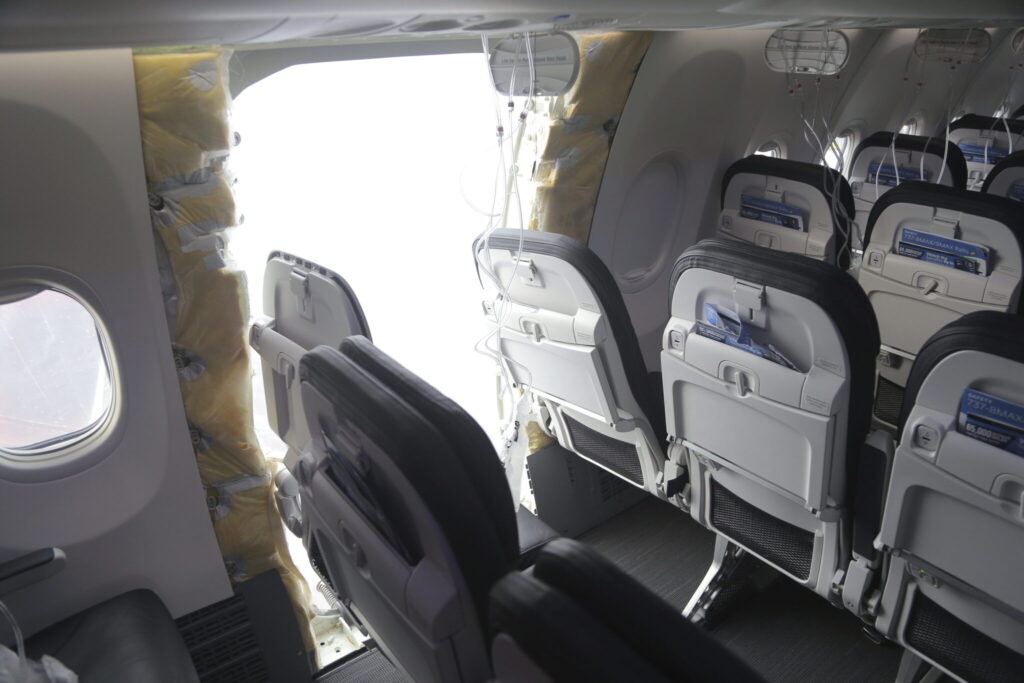
“It is time to re-examine the delegation of authority and assess any associated safety risks,” said new FAA Administrator Mike Whitaker. “The FAA is exploring the use of an independent third party to oversee Boeing’s inspections and its quality system.”
The agency also said it will increase monitoring of problems reported on Max 9 flights.
The FAA’s intensifying focus on safety at the manufacturer comes just a day after it announced an investigation into whether Boeing failed to make sure a fuselage panel that blew off was safe and manufactured to meet the design that regulators approved.
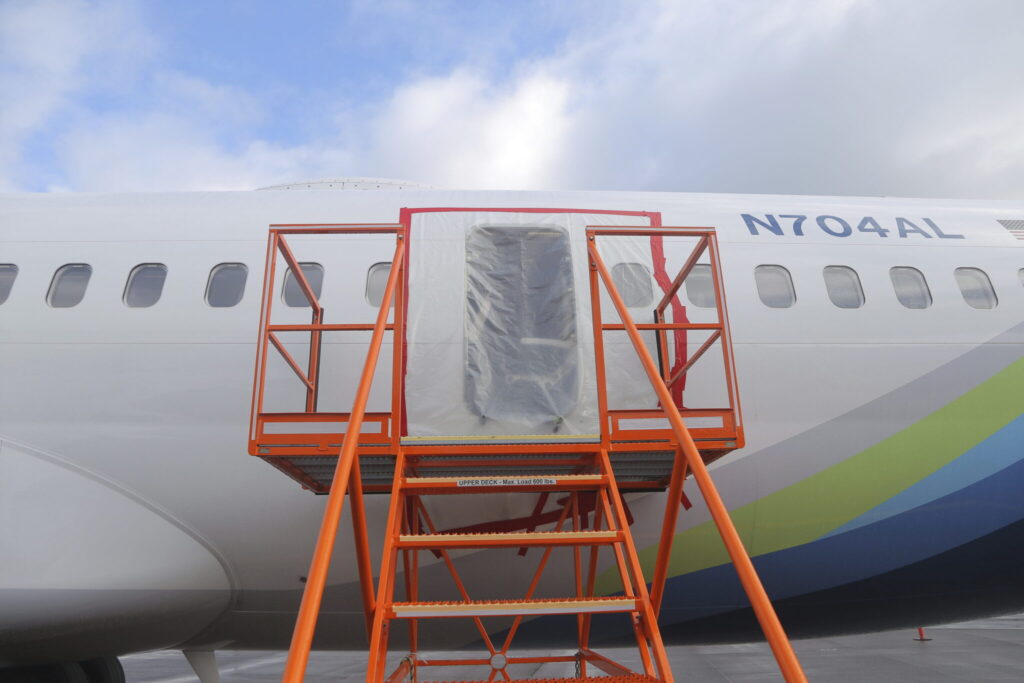
Messages were left Friday seeking comment from Boeing. The Arlington, Virginia, company said Thursday that it would cooperate with the FAA probe, which is focusing on plugs used to fill spots for extra doors when those exits are not required for safety reasons on Boeing 737 Max 9 jetliners.
One of two door plugs on an Alaska Airlines jetliner blew out shortly after the plane took off from Portland, Oregon, a week ago, leaving a hole in the plane. The cabin lost pressure and was forced descend rapidly and return to Portland for an emergency landing. No serious injuries were reported.
Former congressman Peter DeFazio, who chaired the House committee that investigated the Max crashes, said Friday that the FAA’s actions are needed to rein in quality and safety problems at Boeing.
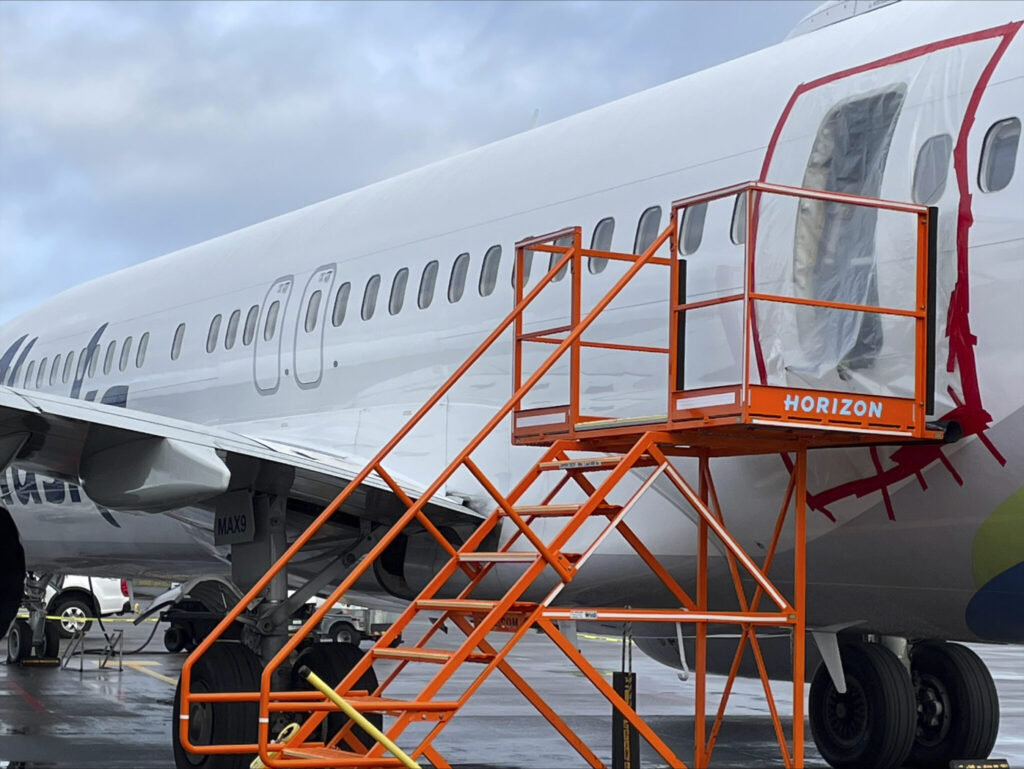
“This is a this is an extraordinary step by the administrator of the FAA, one that is long overdue,” he said. “The possibility that Boeing will lose the (deputization of its employees) and be subject to independent third party oversight — and I would expect that will have to be paid for by Boeing — that would be a massive, unprecedented step to force the unwilling executives at Boeing to shape up the company.”
After the panel blew off the plane, the FAA grounded all Max 9s equipped with the door plugs, forcing Alaska and United to cut flights. The aircraft remain grounded while the National Transportation Safety Board and the FAA continue their investigation.
Since then, the FAA was told of other problems on the Max 9. Alaska and United reported finding loose bolts on door plugs that they inspected in some of their other Max 9 jets.
NTSB investigators said this week they have not been able to find four bolts that are used to help secure the 63-pound door plug. They are not sure whether the bolts were there before the plane took off.
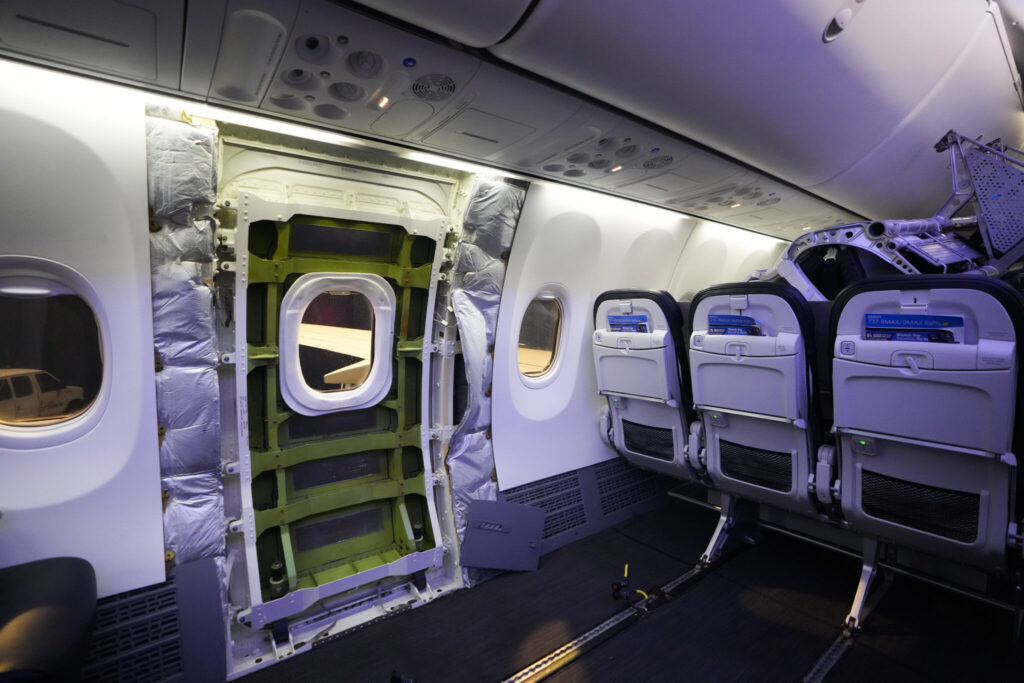
On Thursday, the FAA asked Boeing to respond within 10 business days and tell the agency “the root cause” of the problem with the door plug and steps the company is taking to prevent a recurrence.
Earlier this week, Boeing CEO David Calhoun called the incident “a quality escape.” He told employees that the company was “acknowledging our mistake … and that this event can never happen again.”
The door plugs are installed by Boeing supplier Spirit AeroSystems, but investigators have not said which company’s employees last worked on the plug on the Alaska plane that suffered the blowout.
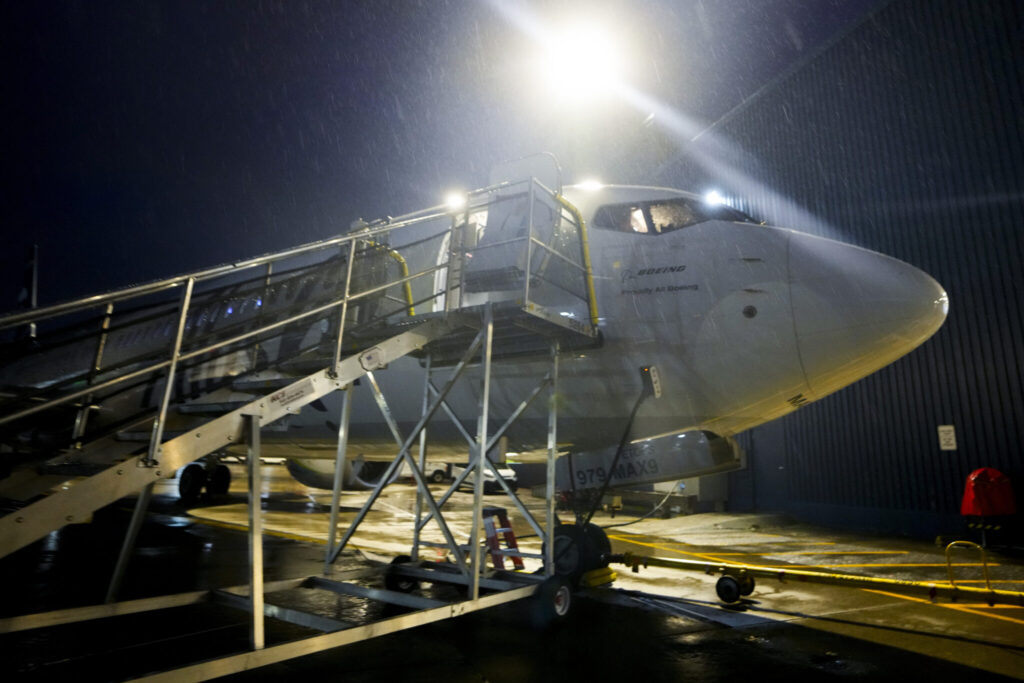
The day after the blowout, the FAA grounded all 65 Max 9s operated by Alaska and 79 used by United Airlines, until Boeing develops inspection guidelines and planes can be examined. Alaska canceled all flights by Max 9s through Saturday.
The incident on the Alaska plane is the latest in a string of mishaps for Boeing that began in 2018, with the first of two crashes of Max 8 planes in Indonesia and Ethiopia — and more than four months apart — that killed a total of 346 people.
Max 8 and Max 9 planes were grounded worldwide for nearly two years after the second crash. Since then, various manufacturing flaws have at times held up deliveries of Max jets and a larger Boeing plane, the 787. Last month, the company asked airlines to inspect their Max jets for a loose bolt in the rudder-control system.






